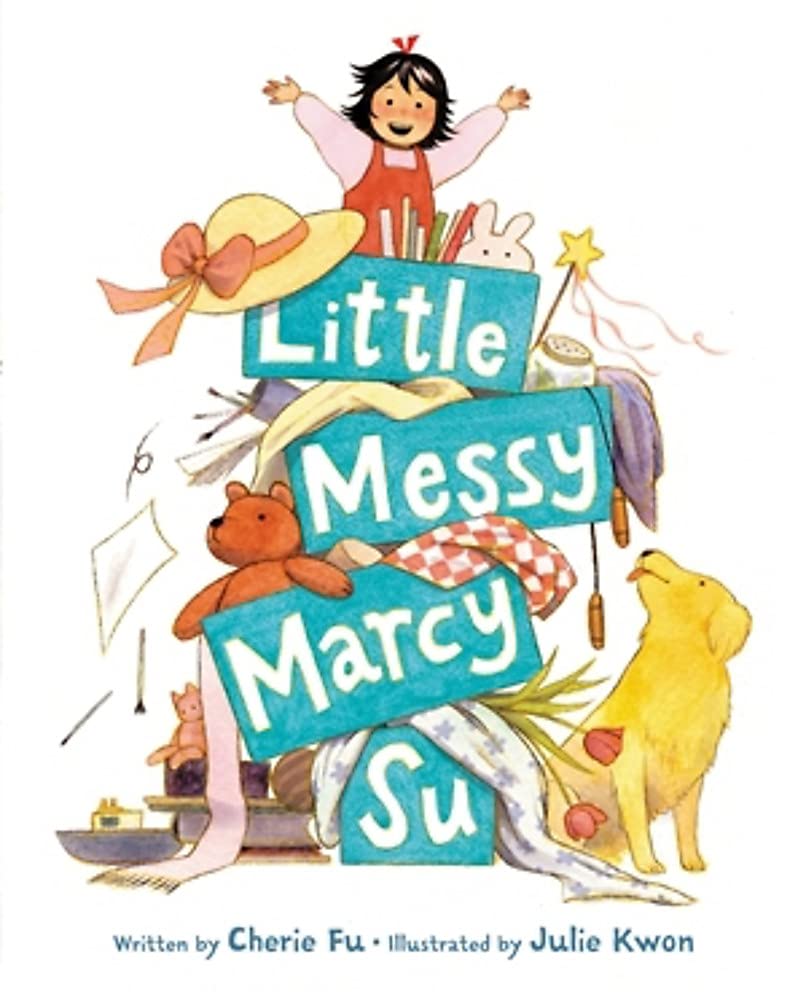This month's Book Nook topic is...
Turn Book Reading into a Conversation with Little Messy Marcy Su

Children benefit when adults read with them, rather than to them. What’s the distinction? Reading with a child means that they are actively engaged in a conversation throughout – giving them more opportunities to practice their language and literacy skills. When you turn book-reading into a conversation, children are more likely to:
✓ Understand the story
✓ Talk about their interests
✓ Connect what happens in the book to their own life
The Book:
Little Messy Marcy Suwritten by Cherie Fu and illustrated by Julie Kwon
Why we chose this book
Marcy Su doesn’t like tidying up – who does? And even when she starts to clean, things get… messy! With fun rhymes and charming pictures on each page, Marcy’s story comes alive.
There is so much to talk about as you keep the interaction going and turn book-reading into a conversation with children.
Get the conversation started
Marcy likes to hurry, but the first step in turning book-reading into a conversation is to stop and Observe, Wait and Listen™ (OWL) to see what the child is interested in. You can OWL beginning at the front cover. Read the title, then wait to see if the child will look at, point to, or comment on something they notice. This gives the child a chance to take the first turn in the conversation.
Once the child has shown you their interests, Follow The child’s Lead by responding to them. For example, if the child points to the dog on the cover, you might say, “There’s the dog. He has to look way up to see Marcy.” After your response, wait again to see what the child says or does next.
Keep the conversation going
Try to keep the conversation going back and forth for as long as it’s enjoyable for the child. This ensures they have the most opportunities possible to practise their language and literacy skills. Where the conversation goes depends on the child and you. Here are some ways you could keep the conversation going while reading this book.
Talk about emotions
Recognizing how others are feeling is an important part of understanding stories. This book has many opportunities to talk about emotions. During the story, Marcy feels:
- surprised
- disappointed
- excited
- silly
- proud
If the child points to Marcy, you could say, “Oh no, look at Marcy’s face. She is disappointed that she has to stop playing in the mud.”
Talk about solving problems
In most stories, the characters encounter problems. It’s important to help the child understand what the problems are and how to resolve them. If the child says, “Uh oh!” when Marcy’s bath is overflowing, you could say, “Uh oh! Marcy is trying to clean up, but she keeps making bigger and bigger messes!” To keep the conversation about solving problems going, you could ask the child what Marcy forgot to do. Remember to wait and give the child the time they need to respond.
Talk about the child’s experiences
One of the best ways to build the child’s understanding of a story is to relate what’s in the book to their own experiences. Talking about what’s happening on the page and how it matches what the child has done before helps to keeps the conversation going for longer.
For example, if the child comments on Marcy getting muddy, you could talk about the last time they went splashing in the rain too. Perhaps the child had to change their socks or have a bath when they got home. You could say, “Oh no! I bet her feet are getting soaked like yours were yesterday.” Wait to see what else the child has to say about their experiences.
Read the book again (and again!)
Children enjoy reading the same book many times. As they become familiar with the story, don’t worry if you sometimes leave the words on the page behind. Turning book-reading into an enjoyable, back-and-forth interaction lays the foundation for strong literacy and language skills.
Happy reading!
More Resources
The strategies in this Book Nook post are drawn from Hanen’s practical, research-based guidebooks for building emergent literacy. Explore the links below to learn more about how these guidebooks can support you.
For Parents I'm Ready! guidebook
I'm Ready! guidebook
For Educators ABC and Beyond guidebook
ABC and Beyond guidebook
